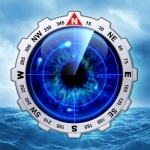
Master Fear of Flying
Travel and Medical
App
Discover your flying fear type with our questionnaire at masterfearofflying.com The interactive...

Plane Finder
Travel and Navigation
App
Plane Finder tracks planes in real time around the world. Watch live moving planes on a worldwide...

Forbes Magazine
Business and Finance
App
Truly unique among magazine apps, the Forbes app acts as your gateway to the ultimate Forbes...

Sugar Daddy Gay Dating For Sugar Daddy, Sugar Baby
Social Networking
App
GDaddy is the world’s FIRST and LARGEST gay dating app for gay sugar daddies, gay sugar babies. It...

Sudy - Sugar Daddy Dating App
Dating, Lifestyle and Social Networking
App
Who is your sugar daddy? Welcome to the #1 matchmaking and dating app for both sugar babies and...

MM: #1 Millionaire Dating App
Dating, Entertainment and Social Networking
App
MillionaireMatch - the original millionaire dating app since 2001, over 3,000,000 users worldwide....

Pepperi Sales Rep App
Business and Productivity
App
Pepperi is the leading mobile CRM tool for sales reps, field agents, and sales managers of branded...

DIY Map GPS (App for World Travelers)
Navigation and Travel
App
► iOS 10 Support! ►►►►► TUAW Review - "DIY Map GPS is a good app if you are a hiker, or...

Compass Eye Bearing Compass & Marine Navigation
Navigation and Travel
App
Professional Bearing Compass with real-time camera and map views, bearing markers and 8x zoom. ...
